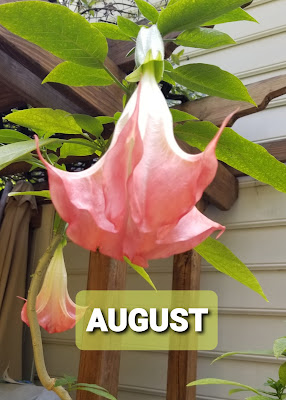Garden Club News
Christmas in July
In preparation for our December Greens Sale, our elves made itty bitty bows and medium sized bows, hurricane bases and wreath forms. Look for more fun projects at our Spooky Workshop on October 20th.
💮💮💮💮💮💮💮💮💮💮💮💮💮💮💮💮
Looking Ahead
The Extraordinary Lives of
Honey Bees
How they make babies, honey,
wax, fill our dinner plates, and are the smartest insect.
Sunday September 8, 2024, 2-4pm
Learn about:
·
Why honey bees are irreplaceable (how they are unlike any other
insect or pollinator)
·
How a colony of 10's of thousands of honey bees behaves as a
single animal
·
How honey bees make honey (very labor intensive!) and where
honey gets its flavor.
·
How honey bees make more honey bees (bizarre and always deadly)
·
What is killing the bees, and how you can help them
·
Loads of fascinating bee facts you can take home to impress your
friends... including "No male honey bee has a father, only a
grandfather." And you will be able to effortlessly identify the
gender of any honey bee you see
on flowers in your garden!
Phil recently coauthored and published 'Hive Tour' a photo-rich book showing the extraordinary bees.
Light refreshments will be served.
The Garden Club plant sale table will be available.
Admission
to this event is free for Museum Members. There is a $10 fee for nonmembers.
Please register at www.SandySpringMuseum.org or
call 301-774-0022
Eat your weeds!
Common purslane, Portulaca oleracea, is a highly variable, weedy plant in the purslane family (Portulacaceae) with a wide distribution. Although it is likely native to North Africa, the Middle East, and the Indian subcontinent, it had reached North America by pre-Columbian times and was in Europe by the late 16th century. It is now naturalized in most parts of the world, both tropical and temperate – equally at home in flower beds, cultivated fields, and roadsides or other disturbed or waste places. It has been grown for more than 4,000 years as a food and medicinal plant and is still cultivated in many places today.

It is considered quite nutritious because it is unusually high in omega-3 fatty acids (found mostly in fish and flax seeds) and contains significant amounts of vitamins A and C, as well as calcium, iron, magnesium and potassium and antioxidants. It also contains high amounts of oxalates (just as spinach does) so should not be consumed excessively by those susceptible to forming kidney stones. It is sometimes used as fodder and is fed to poultry to reduce egg cholesterol and was also used traditionally as an ointment for burns. Some other common names include garden purslane, little hogweed, pusley, and wild portulaca. It’s called pourpier in France and verdolaga in Mexico.
Purslane is a fast-growing herbaceous annual with succulent leaves and stems. Even the oblong cotyledons (seed leaves) are succulent. The multiple smooth, reddish stems originating from a single taproot are mostly prostrate, forming a mat covering up to 3 feet in diameter. Depending on the amount of moisture available, the plant may be quite low-growing or more erect up to 16″ tall.
 |
| A crop of purslane growing in a neighborhood garden. Good in salads or steamed like spinach. 💮💮💮💮💮💮💮💮💮💮💮💮💮💮💮💮💮💮💮💮 |
Follow us on Facebook and in the monthly Newsletters on our blogspot.








